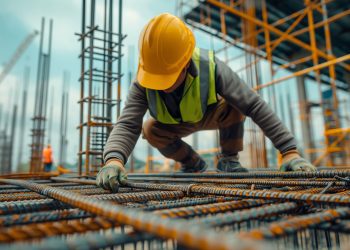What could the workplace and the nature of work itself be like for the asset management industry as we emerge from the pandemic shutdown? How could the industry begin to reconsider the use of their office space? These are just a few of the questions asked in our new report, “The Future of Asset Management.”
I believe the workplace is likely going to be a physical-virtual hybrid for many years to come. Why? The productivity gains of a hybrid approach have been too substantial—and the positive effect that the resulting employee experience has had on engagement has been too important—to turn back. We have seen a change that is more permanent than transient. One recent report found that almost half of surveyed employees would quit rather than lose flexibility around work location.
Accenture’s research found that 83% of workers identify a hybrid model as being optimal in the future workplace. Why might that be? I believe there are three components:
- Technology—A need to be in the office, part of the time, to access the right tech.
- Colleagues—Humans are social, and interaction is key.
- Visibility—Meeting with leaders, peers and teams is key to developing long-term relationships and career progression.
Three kinds of workspace
To meet workers where they want to be, let’s look at a mental model we’ve been using at Accenture to think of the post-pandemic work experience—balancing who’s in the office and who’s not while trying to be as productive as possible. We see the office splitting into three linked areas:
The first is the social space—coffee area, café, foosball table, whatever. It’s not a place for working but rather for taking a break, unwinding, letting off steam and chatting with colleagues.
The second type of workspace could be set up for group meetings, though not your typical, “six to twelve people in a conference room” arrangement. The rooms could also have the hardware and network connectivity so that those physically as well as virtually present can interact. We see quite a bit of innovation on the horizon for group meetings, including virtual reality and augmented reality—interaction among multiple people in multiple locations with headsets operating in VR-type rooms, simulating an in-person presence.
Finally, there’s the individual workspace. In recent years, places for people to work by themselves while physically in the office had become primarily a combination of cubes and open, “hot” seating. That’s now due for a change. We found that 71% of surveyed executives said they were reconfiguring their workspace as a result of the pandemic. This reconfiguration is happening for at least a couple of reasons. One is the transition out of the pandemic mindset of needing to keep people isolated while in the office. A second is the degree of interactivity between people both in and out of the office and across multiple offices.
The hybrid work environment: The largest change management undertaking in recent history
What might this hybrid use of workspace, and the reality of a multi-location working environment, look like for an asset management firm? The clear need here is to focus on the right blend of physical and virtual to improve the quality of the overall interaction.
For a typical front-to-back asset manager, the wholesalers/distribution team that interacts with a wirehouse may be doing less work at a client site with more days spent from remote locations. A hybrid model for interaction with distribution partners—integrating virtual and face-to-face could likely become the norm in the future.
As one moves from distribution to portfolio construction, more people are likely to return to a physical office, though not necessarily five days a week. With traders, it’s probable that they would be physically present in an office, though even traders have found ways to operate remotely during the pandemic. As you get to the back-office support functions you’ll see even more employees working some days at home, some days moving from office location to office location—but still a need to connect back to the satellite office.
Regardless of the mix of in office and virtual work, enabling a hybrid work environment requires a fundamental shift amongst leaders, managers, and human resources (HR):
- Leaders will need to embody new ways of working and set the tone from the top.
- Managers will need to find new ways to drive inclusion and engagement, create community, and maintain productivity across in-person and virtual team members.
- HR will need to set new business policies.
The shift to a hybrid work environment is probably the largest change management undertaking in recent history, and asset managers that get it right will not only recognize this but also take action to envision and implement a new workforce experience.
Taking a purposeful view of your future workspace
The words I use most often with clients with regards to future workspace planning are “purposeful” and “intentional.” Companies need to look at what workforce and workspace arrangements are likely to drive productivity and growth, and then work with their real estate firm and facilities group to design to that future. This way, you’ll arrive at a usage mix that supports your optimal ways of working and create the workforce culture needed to be successful in a physical-virtual hybrid workplace. As we look to the future of asset management, designing new ways of working, and thinking about the workspace in practical and innovative ways, will be keys to success.
To find out more about positioning yourself for success in the future asset management industry, check out our new thought leadership. If you’d like to talk about your own journey to 2025, please reach out. I’d love to hear from you.
Thanks to Evan Tyner for contributing to this blog.
By Rob Dicks
About the author: Rob Dicks is Managing Director, Strategy, Capital Markets, for Accenture.
This article originally appeared at https://capitalmarketsblog.accenture.com/hybrid-workplace-is-it-the-future-for-asset-managers?_ga=2.46457829.39465396.1631294605-1171132204.1628442270 and is republished with permission.












